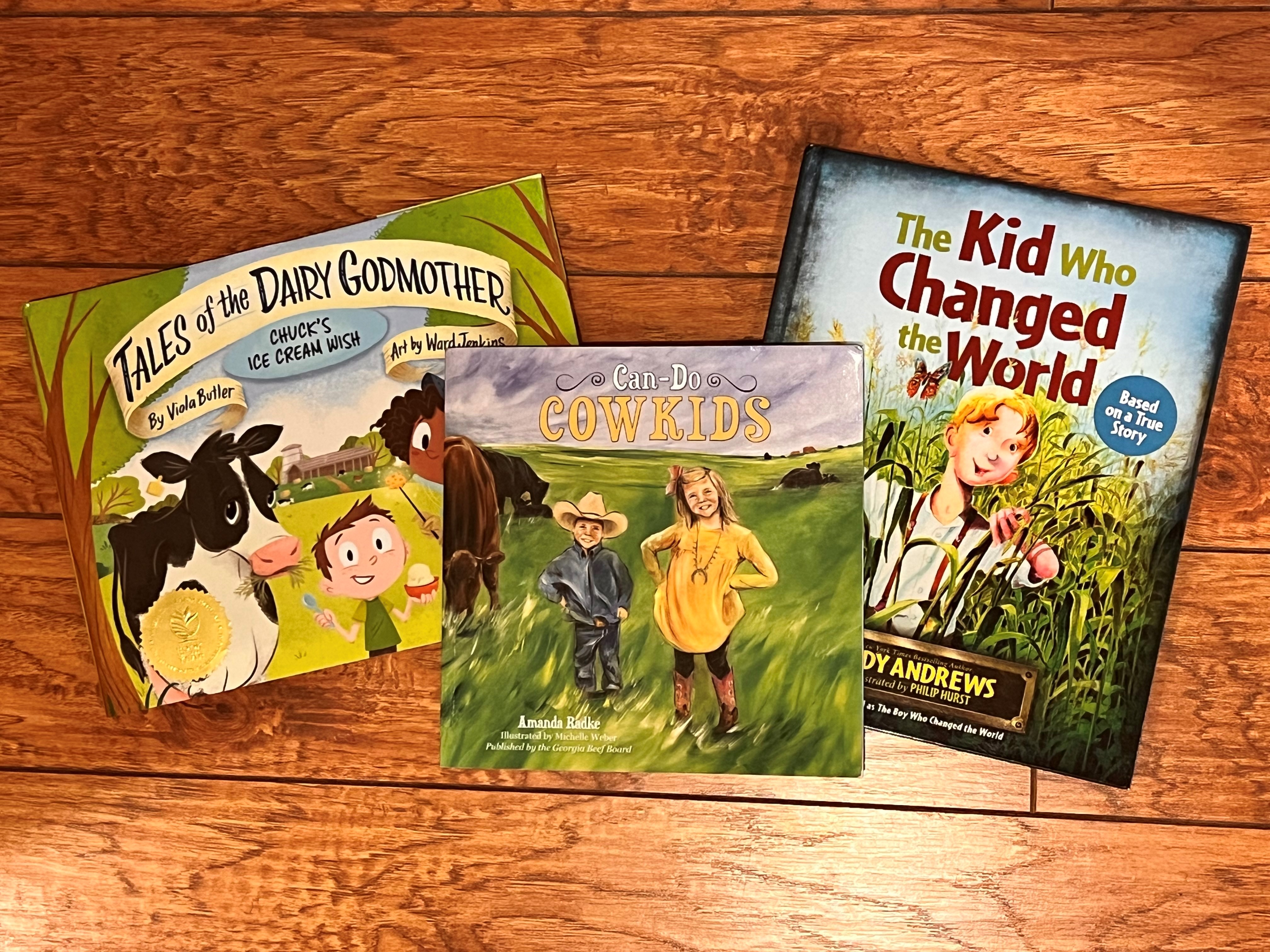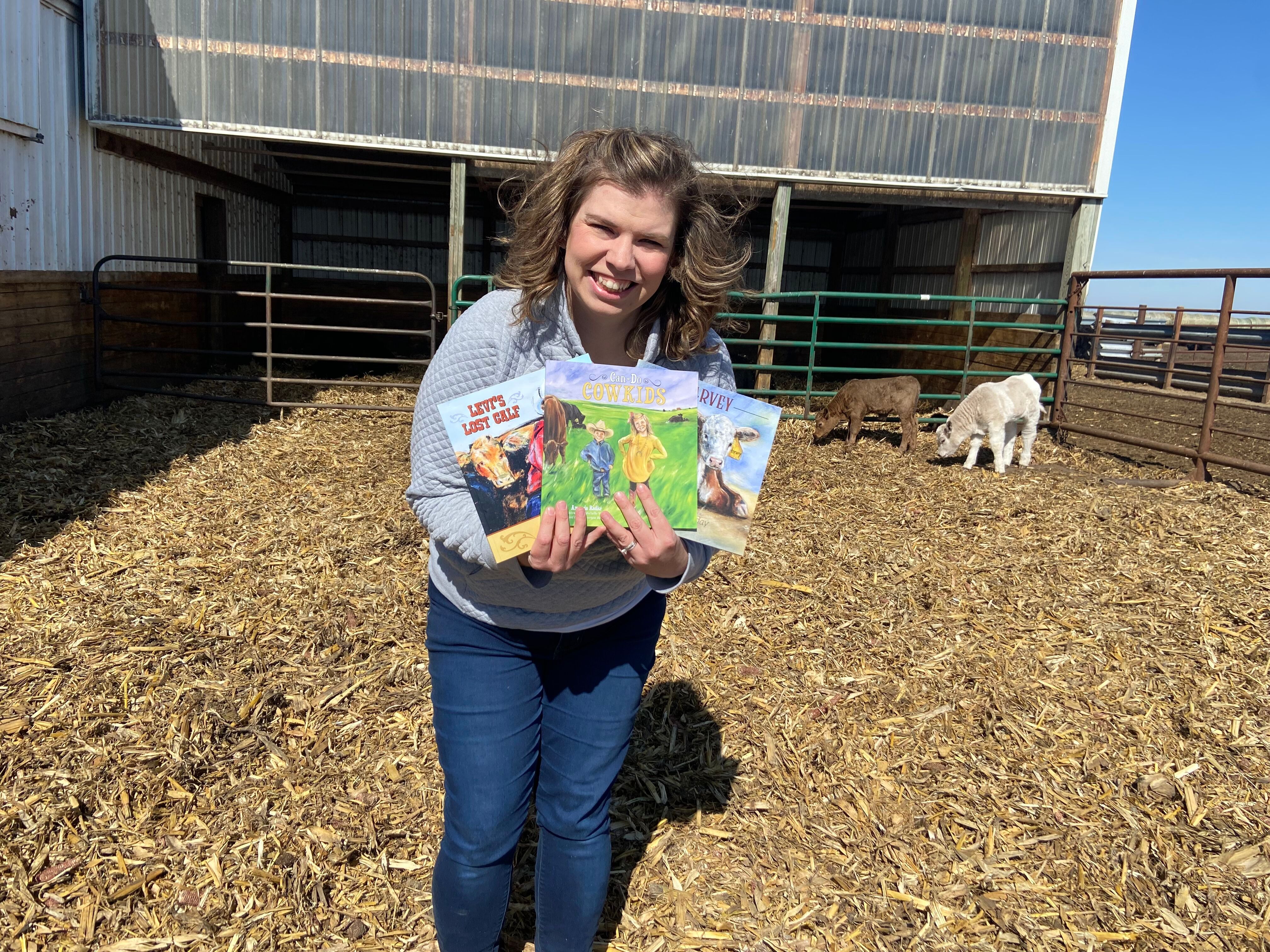Let’s Read! Top Ag-Inspired Books
March 12, 2023
By Sara Preston, Commonground Iowa Volunteer
In honor of Read Across America Month, discover five ag-inspired books, which are farmer, mom and educator approved.
March is Read Across America Month! Social media posts, letters sent home from the school or daycare and often the fun dress-up days around Dr. ’Seuss’s birthday seek to encourage parents and kids to read more books. Kids across the nation spend the month enjoying guest readers, participating in reading challenges and reading calendars to push them to get their noses into a good book.
There are many great statistics about the benefit of reading. For example, a child who reads 20 minutes every day or more can learn upward of 2 million words annually. The nurturing and one-on-one attention from parents during reading aloud encourages children to form a positive association with books and reading later in life. And for adults, regular reading has been shown to lower stress levels by as much as 68%. By the end of the day and after a bedtime routine, I think it is safe to say many parents could use their stress levels reduced.
As a mom of three, I understand the importance of reading. I can see how essential it is for vocabulary in my first grader, how it inspires imaginary play in my 3-year-old, and I can even see how the wheels are turning in my 1-year-old’s brain as we read a variety of books.
As a farm family, ag books are common in our house. We have many books that talk about farming, tractors, cows, pigs, goats and more. But something I often see in our large library of ag books is that many books with farms or animals are incorrect. One example is seeing drawings of animal characters in books that have udders on bulls (male cows). The only ones with udders should be the mother cows; bulls do not have udders.
For Read Across America Month, I want to share a handful of books my family loves that are true agriculture books. The facts are correct and can show you accurate insight into agriculture. I hope you enjoy these books as much as we do!
Top five agriculture children’s books I recommend include:
1. The Kid Who Changed the World by Andy Andrews

This book is a wonderful, inspiring story about Norman Borlaug, an agronomist who successfully developed disease-resistant, high-yielding crops through genetic modification. Norman Borlaug saved more than 1 billion people by creating more food. When it is my night to pick a book, this is often my go-to because I love the agriculture story and the message of how every single kid can make a difference.
After reading the book, consider talking with kids about what they can do to change the world. It can be anything from chasing their dreams to being nice to the new kid in class. I love hearing my own children’s perspectives on what they believe are actions to change the world.
2. Can-Do Cowkids by Amanda Radke
We have a beef cattle farm in northern Kossuth County, so my kids love this book. It’s about a couple of kids who live on a cattle ranch and the tasks they can do to help the cattle and their parents. It is a great book, giving real insight into a cattle ranch, written by Amanda Radke, a South Dakota cattle rancher. Radke has written several books, all with agricultural ties. From cattle to peanuts to soil, she is a great source for authentic agriculture books.
Do your kids have questions about beef cattle and how we care for our animals? As a CommonGround Iowa volunteer, there are a number of cattle farming women in our group who raise cattle of all different sizes and in different ways. We would love to answer your questions. You can tag us on social media, Commonground Iowa or email me at sara.preston34@gmail.com.
3. The Girl Who Thought in Pictures: The Story of Dr. Temple Grandin by Julia Finley Mosca
This book is based on the true story of Dr. Temple Grandin, a girl who went out and make one of the most significant impacts in animal agriculture. At a young age, Grandin was diagnosed with autism. One of the places she loved most was her uncle and ’aunt’s cattle farm. Because of her passion for cattle, she came up with ways to move cattle around while keeping them as calm and quiet as possible. This is a great book that can show how even those that may have a challenge in front of them can turn it into their gift and make a difference in being able to think in ways that others may not.
After reading this book, talk about the gifts your children have. Let them first say what they think their gifts are; then you can share what you see as their gifts and talents.
4. How Did That Get in My Lunch Box? by Chris Butterworth
I learned about this book while being a classroom educator with North Central Iowa Ag in the Classroom. It is a fantastic book that talks about many foods that we often find in our lunch boxes.
A great activity to do after reading this book is to come up with a list of things that you or your child might not think come from a farm. Do some research or talk to a farmer about your list. CommonGround Iowa volunteers would be happy to have a conversation with you about these food products or any questions you have!
5. Tales of the Dairy Godmother by Viola Butler
While I am a beef farmer, I first fell in love with dairy cows. This book tells the story of a boy named Chuck and his wish to always have ice cream. His ‘Dairy Godmother’ grants his wishes and brings him to a dairy farm. Chuck learns all about where milk comes from, the tasks a dairy farmer does and the process of making milk into ice cream. This may be a hit if you have someone at home who likes fairy tales.
Following the reading of “Tales of the Dairy Godmother,” list all the dairy products you can think of and share which dairy product is your favorite. We also have a great group of CommonGround dairy farmers to answer your dairy-related questions.
We would love to see which of these books you enjoy with your children, grandchildren, nieces or nephews, or kids in your classroom. Take a picture and if you share it on social media, add the hashtags #commongroundiowa and #foodnfamilies.
Happy Reading!
